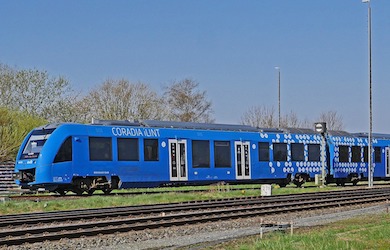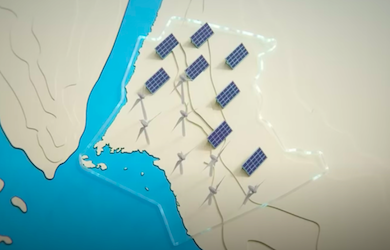As part of Pager Power’s role, we often come across many stakeholder and local resident responses to proposed renewable energy projects. Upon reviewing these, there are usually common concerns that are raised, with an often shared phrase among them – ‘I am not against renewables but…’.
The most common concerns reference site selection or landscape and visual impacts. The former response often questions a site’s suitability for development (most typically referring to the loss of agricultural land for food production), and the latter objections often refer to the impact upon the visual amenity of an area.
This article presents some common objections, with no reference to specific sites. The aim is to explore whether developers are making mistakes when selecting sites and for their renewable projects or are stakeholders and residents simply adverse to renewable energy projects on their doorstep.
Typical Responses
Following a quick search of news articles and planning portals, the following responses were identified where the ‘I am not against renewables but…’ response was identified. The particular projects are not identified because the aim of this article is to show the common themes surrounding stakeholder responses for developments, not to seek to validate or invalidate the reason an objection has been received for any particular project.
- ‘But Suffolk County Council raised a host of concerns over the plans for the project on the Suffolk/Cambridgeshire border and stressed that while it was supportive of renewable energy generation, it couldn’t be used to justify “poorly developed schemes in the wrong location” ’.
- ‘I am not against green energy, far from it, but what we are against is the use of good arable land being taken out of production and this will make a difference to every single one of you…’
- ‘Nobody in our group is against solar, but just not at the expense of prime arable land and wildlife.’
- ‘Whilst I am all for renewable energy, this does not automatically override Environmental Protection.’
A Developer’s Objective
The overarching policy dictating UK renewable development (and generally internationally) is to become net-zero emitters of CO2 and other greenhouse gases by 2050. This means there is a big push for developers to build renewable energy projects, and to build them big to play catchup with respect to climate targets that are already likely to be missed. Whilst their objectives may be driven by the incentive of leading the green agenda, long term sustainability and removing the reliance on fossil fuels, the bottom line is that developers (and the investors who back them) need to be profitable. Therefore, some smaller-scale projects may not be worth the financial outlay that they once were and/or the financial return on investments is prohibitively small, or worst still, non-existent. For both solar and wind energy, these developments have generally got larger in terms of size and scale over the last 10 years or so. Until a few years ago, 5MW was the standard size for a large scale solar farm, now these developments are dwarfed by some that now go into the hundreds of MW capacity. Similarly, advancements in wind turbine technology have seen the size of a wind turbine grow. Until a few years ago, 125m tip height turbines were the common maximum size turbine but now onshore turbines are reaching as high as 200m above ground level, and this continues to grow.
It is clear that renewable energy projects are getting bigger. They are also becoming more common and this needs to happen to meet the 2050 targets. On this basis, more and more renewable energy projects will be built near to residents and other local stakeholders as remote sites become scarce. This is an issue that a developer will often face and therefore it is imperative that more is done to alleviate common concerns for these new renewable projects.
A Local Stakeholder’s or Resident’s Objection
It is correct for local stakeholders and residents to be cautious about a project proposed to be developed near them. Generally, anything that instigates local change is likely to lead to questions being asked, which in turn may lead to an objection. If a stakeholder isn’t satisfied that their concerns have been addressed by a developer, or worse if they have been disregarded, an objection will likely be maintained. Simply put, people generally do not like change.
There are often valid concerns raised by a local stakeholder or resident that warrant investigation or responses. Generally speaking, residents commenting on planning applications are not experts however they often raise some valid points. Separating the valid points from the less valid ones should be something that a resident or local stakeholder seeks to achieve so that the significance of the key issues are not watered down. Of course many of the common issues are captured within the Environmental Statement, but some more local issues may not be considered. No renewable energy project goes without an impact on the surrounding local environment, and a developer failing to acknowledge this could be harmful. Planning decisions are about weighing up the pros against the cons i.e. does the wider benefit of a development outweigh the negative impacts. Explaining and discussing key issues to a resident or local stakeholder (both the pros and the cons) should be something that a developer aims to achieve. A developer simply ignoring these responses can add fuel to the fire, however the general feeling within all objections is the lack of trust towards developers doing the right thing.
It is natural for a resident to be concerned about a large scale renewable project on their doorstep. Some may already have existing projects near them, others may have never come across a development of this type before, let alone within close proximity to their dwelling. Similarly, other local stakeholders may have their own assets to protect, and this will be at the forefront of any objection.
Discussion and Conclusions
So where is the correct location for a renewable development? Is there ever a location whereby there will be no objections, concerns or impacts to either the environment or on amenity? This perfect site probably doesn’t exist, and if it does, it has probably already been built on.
There will almost certainly have to be local sacrifices somewhere down the line made to ensure we meet net-zero, but it appears that many people do not want to be the ones who experience a local sacrifice for the wider benefit. This is completely understandable.
Back when coal, gas-fired and nuclear power plants were first built, it is very likely that similar objections were received, however over time these structures become part of the landscape. Local people will therefore get used to new renewable projects developed in their area. Before this stage is even reached, it appears developers could be doing more to get residents and local stakeholders onside. Whilst consultation phases are expected, are concerns being truly covered off by a developer or is it possible that local objectors could never be brought onside? It is likely somewhere in the middle. Either way, you will likely continue to see words to the effect of ‘I am not against renewables but…’ on many applications going forwards.
About Pager Power
Pager Power undertakes technical assessments for developers of renewable energy projects and tall buildings. For more information about what we do, please get in touch.
Thumbnail image accreditation: Pixabay (Feb 2017) on Pexels.com. Last accessed 16th March 2022. Available at: https://www.pexels.com/photo/scenic-view-of-agricultural-field-against-sky-during-sunset-325944/



